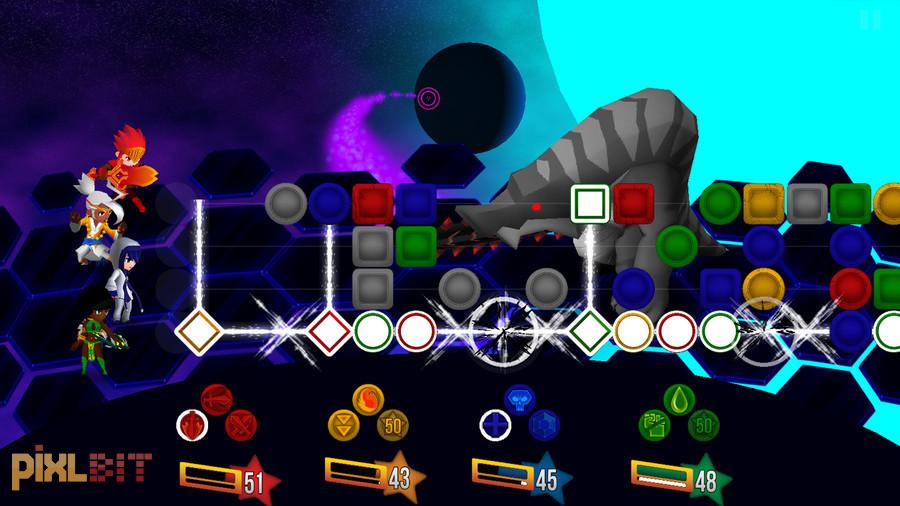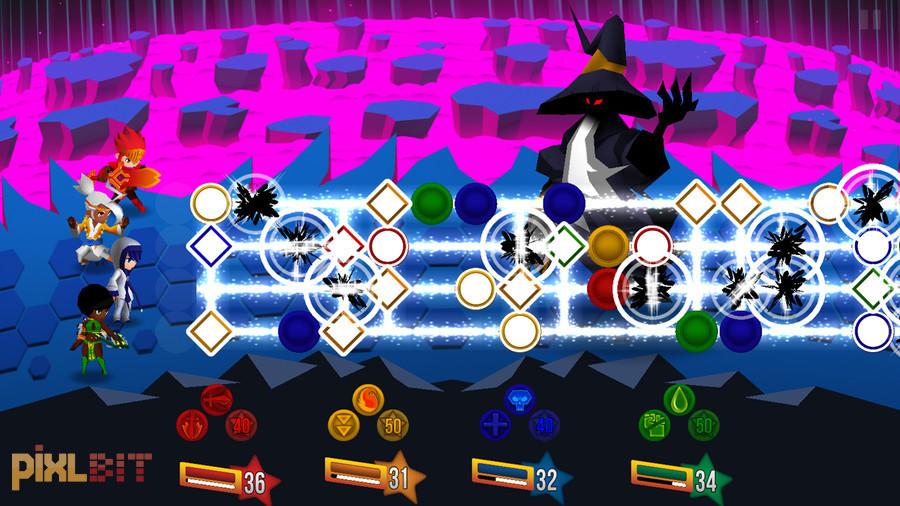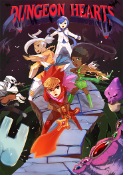Dungeon Hearts Review
|
|
See PixlBit's Review Policies

On 05/14/2013 at 12:00 PM by Travis Hawks There’s definite magic at play in this concoction. |

Give it a shot.
Does the world need another match-three puzzle game? Most definitely not! But, hey, Dungeon Hearts got made anyway, and it’s actually pretty cool. Conjoining a fast-paced action RPG with the heretofore played out match-three puzzle concept is a pretty slick way to innovate on two formulas we’ve had our fill of. Mixing the two together adds extra tension to the color matching bits and a real need for skill and practice in the combat. This well balanced combo makes for an addictive puzzler that I keep coming back to even though I am terrible at it.
I’m very pleased to tell you that Dungeon Hearts comes with an easy mode (alongside normal and hard), which is the only reason I was able to get beyond the first few battles. Yes, battles. The game is set up as a series of encounters with your party of four RPG stalwarts (fighter, healer, archer, and mage) dealing damage based on the matches made among the colored tiles flowing across the screen. The stream of colored tiles starts off slowly, allowing you to combine three matching discs to create a single gem that can be clicked to unleash an attack. Among the oncoming colored shapes, there are also tiles from the enemy that damage your characters if they should reach the end of the stream before you are able to destroy them.
You can move the tiles (whether good or bad) around to form your attacks, to delay taking damage, or more importantly to create powerful combos. Clicking on a single colored gem will trigger other gems on the same column and row to stack your attacks and multiply the pain you dish out. Each colored gem you use issues an assault from the matching character in your party. For instance, a red gem will activate your fighter, green the archer, and so on. If you can set up a combo with all four colors activating simultaneously, then your whole party trounces on the current foe. Your attacks are also used to clear the enemy’s harmful tiles as long as they also fall on the same row or column. Yeah, this sounds pretty complicated, but a quality tutorial makes it pretty clear… at least at first.
As you proceed through the gauntlet of evil creatures, other variations on the basic game start to reveal themselves. The enemies start to send status ailments, immovable attack tiles, attack tiles with double strength, and many other ways to trip you up. These are all added while the flow is getting faster and faster as you advance. Thankfully, like any game with a hint of RPG-ness to it, your characters also start to level up and unlock new powers of their own.
At the end of each battle, a quick mini-puzzle of sorts begins where you frantically match up the three colors for each character again, each time bumping up their level a bit more. As they reach certain level thresholds, new attacks and abilities become available. You’ll be able to perform powerful attacks unrelated to the puzzle game with your fighter, debuff the enemy with your archer, or heal characters with your healer. Each of these skills clears out the stream of gems headed your way too, giving you a much needed breather in later battles.
This is no puzzle game that will let you rely on rote memorization, either. Each battle has a definite randomness to what comes down the playfield, which forces you to always be on the lookout for the best attack and defense strategy – all while frantically clicking, dragging, clicking, clicking, dragging, and clicking your mouse. To me, skill-based games that have just the right balance of randomness are the most fun to practice and improve with, and Dungeon Hearts has hit that sweet spot. Even when I get dealt a pretty brutal string of items headed my way, I can feel myself improving with every attempt and see what I should do next time when a similar (but never identical) situation happens again. Once I do get good enough at the game to beat it consistently (yes, there’s a final boss and an ending), I plan to head back in for attempts at the included “endless” mode where I can simply improve my score and advance farther and farther.
It definitely seems like the iPad version of Dungeon Hearts would be more suited to its play controls since it can get pretty frantic and the mouse seems more cumbersome than a fingertip. The mouse works just fine once you warm up to it a bit, but playing that way does sort of feel like a well-made hack for a game intended to have a touch interface. That’s the only part of the game that really deserves much complaining, though. The graphics are clean and simple, the music dramatic and pleasing, and you can’t complain about the three bone asking price.
Even if you’re skeptical about yet another match-three puzzle game, take it from another doubter that it is possible to make a compelling game with this well-worn concept. Surprisingly, throwing in the now-tired RPG-elements is a big part of the magic that makes it work. There’s no way that just mixing these two things together would guarantee a game as fun as Dungeon Hearts. Real care was put into balancing the battles and making the learning curve just right to make a casual puzzle game that will hook even the most serious gamer.












Comments